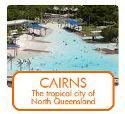Protective Behaviors are a set of sensible, down to earth behavioral response plans for personal safety. Protective Behaviors can cover personal safety in all sorts of situations: sun, road, water, poison, health, farm, fire and people safety. Learning about Protective Behaviors is a way of developing “how to respond” information and personal power. Protective Behaviors give people the skills they need to protect themselves from harm. Often used to protect children from sexual predators, Protective Behavior programs also empower the elderly, the sick, and buildings like schools or churches that are sometimes a target for vandalism.
Most people use Protective Behaviors with children without realizing they are even doing it. Every time you put hat and shoes on a child, you are protecting them from sun and ground harm. Every time you tell a child not to get into a car with someone they do not know, you are beginning to protect that child. Every time you speak to your child about good touch/bad touch, you are helping to empower your child to know what to do if someone tries to touch them inappropriately.
Although there are many different ways to empower people to protect themselves, the most well known program in the world is The Protective Behavior Program. Designed in 1984 by American Social Worker, Peg Floundreu West, the program is widely used across the U.S.A, Australia and in the U.K.
The concepts, ideas, and strategies of the original Protective Behaviour Program are themed to help us all remember that:
1. We all have the right to feel safe all of the time, and
2. Nothing is so awful we can't talk to someone about it.
These two themes guide lesson plans around keeping yourself safe from harm. Although the Protective Behavior Program originally focused on protecting children from sexual abuse, the two themes now encompass community safety in a range of different settings and for a range of different safety needs.
Australian Social Worker, Megan Bayliss, designed another widely accepted personal safety program: the BITSS model of Protective Behaviors. The model deals only with protecting against sexual abuse and focuses on protective play around,
B Body Ownership
I Intuition
T Touch
S Say No
S Support Network.
The central tenet of the BITSS model is to capture teachable moments during everyday play. It is not a classroom based program, rather, parents are encouraged to learn how to use everyday play resources to act as triggers for protective learning and practice around each of the BITSS elements.
Protective Behaviors help to keep our children safe. However, it is not a child’s responsibility to prevent child abuse. The responsibility lies with the abuser. If a child is sexually abused after receiving training in protective behaviors, it is not their fault nor does it mean the child did not learn anything. Sexual Abuse is always the fault of the predator.
Help keep our children safe. Teach some protective behaviors today and act protectively by telling someone if you suspect abuse of a child.
What's happening in your town at the moment to help protect our most valuable and sustainable resource: our children?
Which businessses are showing the most support? Let us know so that we can support them too.




 7:05 pm
7:05 pm
 Megan Bayliss
Megan Bayliss

 Posted in
Posted in 

No Response to "What are Protective Behaviors?"
Post a Comment